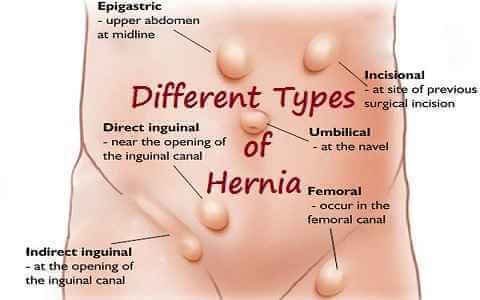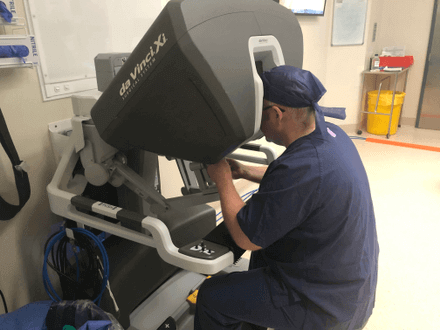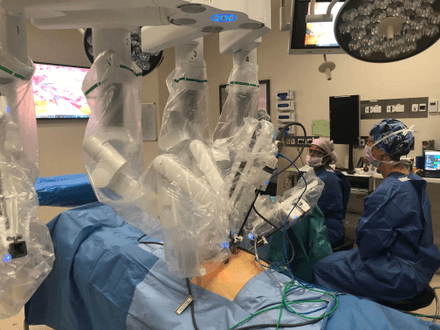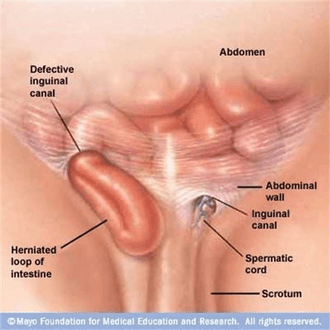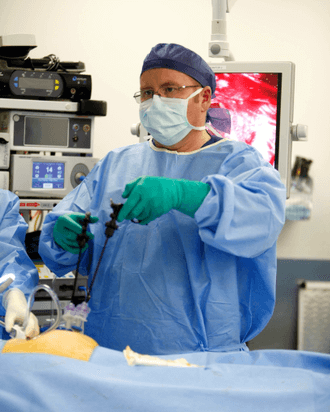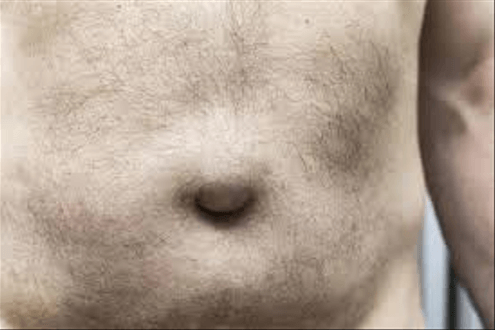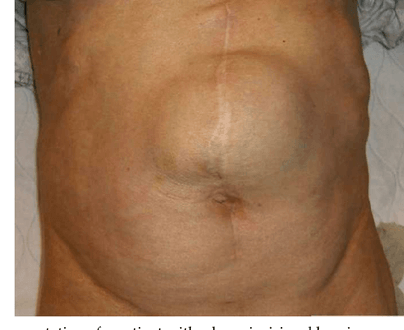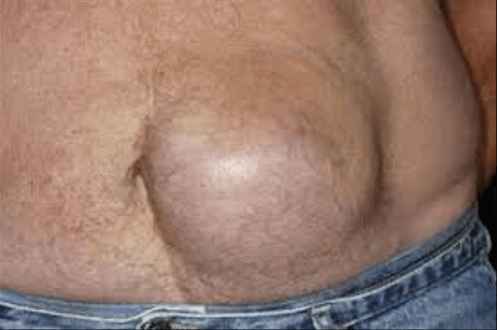Hernia Surgery
Dr Hugh McGregor is an expert hernia surgeon and has completed over 3000 hernia repairs.
He uses laparascopic (keyhole) techniques almost exclusively to repair most types of hernias and has been teaching and mentoring surgeons in this technique for over 10 years. He is one of only a handful of Australian Surgeons experienced in performing Robotic Hernia Procedures.
Common hernia types include:
Inguinal Hernias (groin)
Femoral (upper leg)
Ventral ( through tummy wall)
Umbilical ( belly button and surrounds)
Incisional ( through previous wounds)
Lumbar (through the back and flanks)
WHAT IS A HERNIA?
A hernia occurs when the inside layers of the abdominal muscle have weakened, resulting in a bulge or tear. In the same way that an inner tube pushes through a damaged tyre, the inner lining of the abdomen pushes through the weakened area of the abdominal wall to form a small balloon-like sac. This can allow a loop of intestine or abdominal tissue to push into the sac. The hernia can cause severe pain and other potentially serious problems that could require emergency surgery.
Both men and women can get a hernia.
You may be born with a hernia (congenital) or develop one over time.
A hernia does not get better over time, nor will it go away by itself.
A hernia does not get better over time, nor will it go away by itself.
HOW DO I KNOW IF I HAVE A HERNIA?
The common areas where hernias occur are in the groin (inguinal), belly button (umbilical), and the site of a previous operation (incisional).
It is usually easy to recognize a hernia. You may notice a bulge under the skin. You may feel pain when you lift heavy objects, cough, strain during urination or bowel movements, or during prolonged standing or sitting.
The pain may be sharp and immediate or a dull ache that gets worse toward the end of the day.
Severe, continuous pain, redness, and tenderness are signs that the hernia may be entrapped or strangulated. These symptoms are cause for concern and you should immediately contact your surgeon.
WHAT CAUSES A HERNIA?
The wall of the abdomen has natural areas of potential weakness. Hernias can develop at these or other areas due to heavy strain on the abdominal wall, ageing, injury, an old incision or a weakness present from birth. Anyone can develop a hernia at any age. Most hernias in children are congenital. In adults, a natural weakness or strain from heavy lifting, persistent coughing, difficulty with bowel movements or urination can cause the abdominal wall to weaken or separate.
WHAT ARE THE ADVANTAGES OF LAPAROSCOPIC HERNIA REPAIR?
Laparoscopic Hernia Surgery is a technique to fix tears in the abdominal wall (muscle) using small incisions, telescopes and a patch (mesh). If may offer a quicker return to work and normal activities with a decreased pain for some patients.
ARE YOU A CANDIDATE FOR LAPAROSCOPIC HERNIA REPAIR?
Only after a thorough examination can Dr McGregor determine whether laparoscopic hernia surgery is right for you. The procedure may not be best for some patients who have had previous abdominal surgery or underlying medical conditions.
HOW IS THE PROCEDURE PERFORMED?
Hernia Surgery procedures are done in one of two fashions.
I. The open approach is done from the outside through a 8-12 cm incision in the groin or the area of the hernia. The incision will extend through the skin, subcutaneous fat, and allow the surgeon to get to the level of the defect. The surgeon may choose to use a small piece of surgical mesh to repair the defect or hole. This technique is usually done with a local anesthetic and sedation but may be performed using a spinal or general anesthetic.
II. Laparoscopic hernia surgery. In this approach, a laparoscope (a tiny telescope) connected to a special camera is inserted through a port, a small hollow tube just below the belly button ,allowing the surgeon to view the hernia and surrounding tissue on a video screen. Two small (5mm) holes are made to allow insertion of the instrument for the repair.
III. Robotic Hernia Surgery. In this approach three small holes are made across the middle of the abdomen for the ports. The robot is then attached to these ports to allow the instruments to be inserted. Robotic Surgery is excellent for patients who have had previous surgery ( eg Prostate Surgery) or other extensive abdominal surgery. The precise control also allows for mesh removal for pain and redo surgery after previous keyhole hernia repair.
In laparoscopic and robotic surgery the hernia is repaired from behind the abdominal wall. A small piece of surgical mesh is placed over the hernia defect. This operation is usually performed with general anesthesia.
WHAT HAPPENS IF THE OPERATION CANNOT BE PERFORMED OR COMPLETED BY LAPAROSCOPIC OR ROBOTIC HERNIA SURGERY?
In a small number of patients the laparoscopic and robotic method cannot be performed. Factors that may increase the possibility of choosing or converting to the “open” procedure may include obesity, a history of prior abdominal surgery causing dense scar tissue, inability to visualize organs or bleeding problems during the operation.
The decision to perform the open procedure is a judgment decision made by Dr McGregor either before or during the actual operation. When the surgeon feels that it is safest to convert the laparoscopic procedure to an open one, this is not a complication, but rather sound surgical judgment. The decision to convert to an open procedure is strictly based on patient safety.
WHAT SHOULD I EXPECT AFTER SURGERY?
Following the operation, you will be transferred to the recovery room where you will be monitored for 1-2 hours until you are fully awake.
Once you are awake and able to walk, you will be sent home. This may be the next morning.
With any hernia operation, you can expect some soreness mostly during the first 24 to 48 hours.
You are encouraged to be up and about the day after surgery.
With laparoscopic hernia repair, you will probably be able to get back to your normal activities within a short amount of time. These activities include showering, driving, walking up stairs, lifting, working and engaging in sexual intercourse.
Call and schedule a follow-up appointment with the Practice Nurse after 1 week.
WHAT COMPLICATIONS CAN OCCUR?
Any operation may be associated with complications. The primary complications of any operation are bleeding and infection, which are uncommon with laparoscopic hernia repair.
There is a very rare risk of injury to the urinary bladder, the intestines, blood vessels, nerves or the sperm tube going to the testicle.
Any time a hernia is repaired it can come back. This long-term recurrence rate is not yet known, but is very low.
